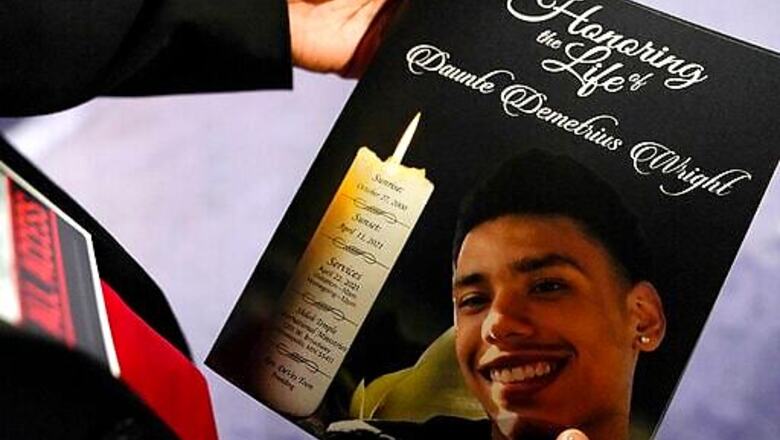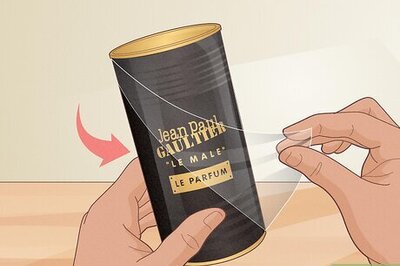
views
MINNEAPOLIS: When attorneys sift through potential jurors for the trial of a suburban Minneapolis police officer who says she meant to use her Taser instead of her gun when she killed Daunte Wright, theyll take a hard look at their attitudes toward policing, protests, and the Black Lives Matter and Blue Lives Matter movements.
Jury selection starts Tuesday in former Brooklyn Center Officer Kim Potters manslaughter trial. The pool has already responded to questionnaires similar to those used this year in Derek Chauvins murder trial for the killing of George Floyd. Roughly 200 potential jurors were asked to provide extensive information on what they already know about the Potter case and whether they have positive or negative impressions about her and Wright.
Potter shot Wright as he tried to drive away from a traffic stop on April 11 a time when Chauvin’s trial was taking place and tensions were already high in the Minneapolis-St. Paul area. Wright’s death sparked several nights of protests in Brooklyn Center, which revived painful memories of the sometimes violent unrest that erupted after Floyds death in May 2020.
Potential jurors were asked whether they or anyone close to them participated in any of the demonstrations or marches related to policing that took place in the Twin Cities area in the last two years. If they participated, they were asked whether they carried a sign and what it said. They were asked if they or anyone they know were injured or suffered property damage in any of those protests.
They were also asked to explain whether they felt that the community had been positively or negatively affected by any of the demonstrations.” And they were asked to detail whether they or anyone close to them ever helped support or advocated in favor of or against police reform.” There was also a question on whether they support defunding the police.
Many of the questions were identical at Chauvin’s trial, where jury selection took 11 days. Hennepin County Judge Regina Chu’s timeline for Potter’s trial includes six days for jury selection, with opening statements set for Dec. 8.
Potter’s defense team can dismiss up to five jurors without giving a reason, compared with three for the prosecution, which is standard in Minnesota courts. In Chauvin’s case, where the pretrial publicity was much more intense, the defense was allowed 15 strikes versus nine for prosecutors. Neither side needs to justify using a so-called peremptory strike unless the other side argues it was because of a juror’s race, ethnicity or gender.
Potter says she made an innocent mistake when she shot Wright during a traffic stop. She and two other officers at the scene, including one she was training, moved to arrest Wright after learning there was an arrest warrant out for him on a gross misdemeanor charge.
As the 20-year-old Black man tried to drive off, Potter, who is white, can be heard on her body camera video saying Taser, Taser Taser before she fired, followed by I grabbed the wrong (expletive) gun. The video shows her holding her handgun for about five seconds before firing.
Prosecutors charged Potter, who resigned two days after the shooting, with first- and second-degree manslaughter, saying she was an experienced officer who was trained to know better. The most serious charge requires prosecutors to prove recklessness; the lesser only requires them to prove culpable negligence. Minnesota’s sentencing guidelines call for a sentence of just over seven years on the first-degree manslaughter count, and four years for second-degree. But prosecutors have said theyll seek a longer sentence.
Attorneys who aren’t involved in the case expect both sides to give jurors a thorough vetting, as they did in Chauvin’s trial. The pool will come from Hennepin County, which includes Minneapolis and is the state’s most populous county. Hennepin is 74% white, 14% Black, 7.5% Asian and 7% Latino, according to census data. Brooklyn Center, the suburb where Wright was killed, is one of the most diverse communities in the state, at 46% white, 29% Black, 16% Asian and 15% Latino.
Oakland, California, civil rights attorney John Burris, who won a $2.8 million settlement for the family of a man killed by a transit officer in Oakland who went to prison for grabbing his gun instead of a Taser in 2009, said jurors typically give police the benefit of the doubt. But he said times have changed since Floyd was killed. If the jury selected for Potter is as diverse as Chauvin’s jury, which was half people of color, he predicted that they’ll take a thoughtful approach.
Mike Brandt, a local attorney who also isn’t involved in the case, said that if he was on the defense team, he’d rather have the case tried in a rural or suburban county. He said Hennepin tends to be more on the liberal side, with more people who support holding police accountable.
___
Associated Press/Report for America Statehouse News Initiative reporter Mohamed Ibrahim contributed to this story.
___
Find the APs full coverage of the Daunte Wright case at: https://apnews.com/hub/death-of-daunte-wright
Disclaimer: This post has been auto-published from an agency feed without any modifications to the text and has not been reviewed by an editor
Read all the Latest News here













Comments
0 comment